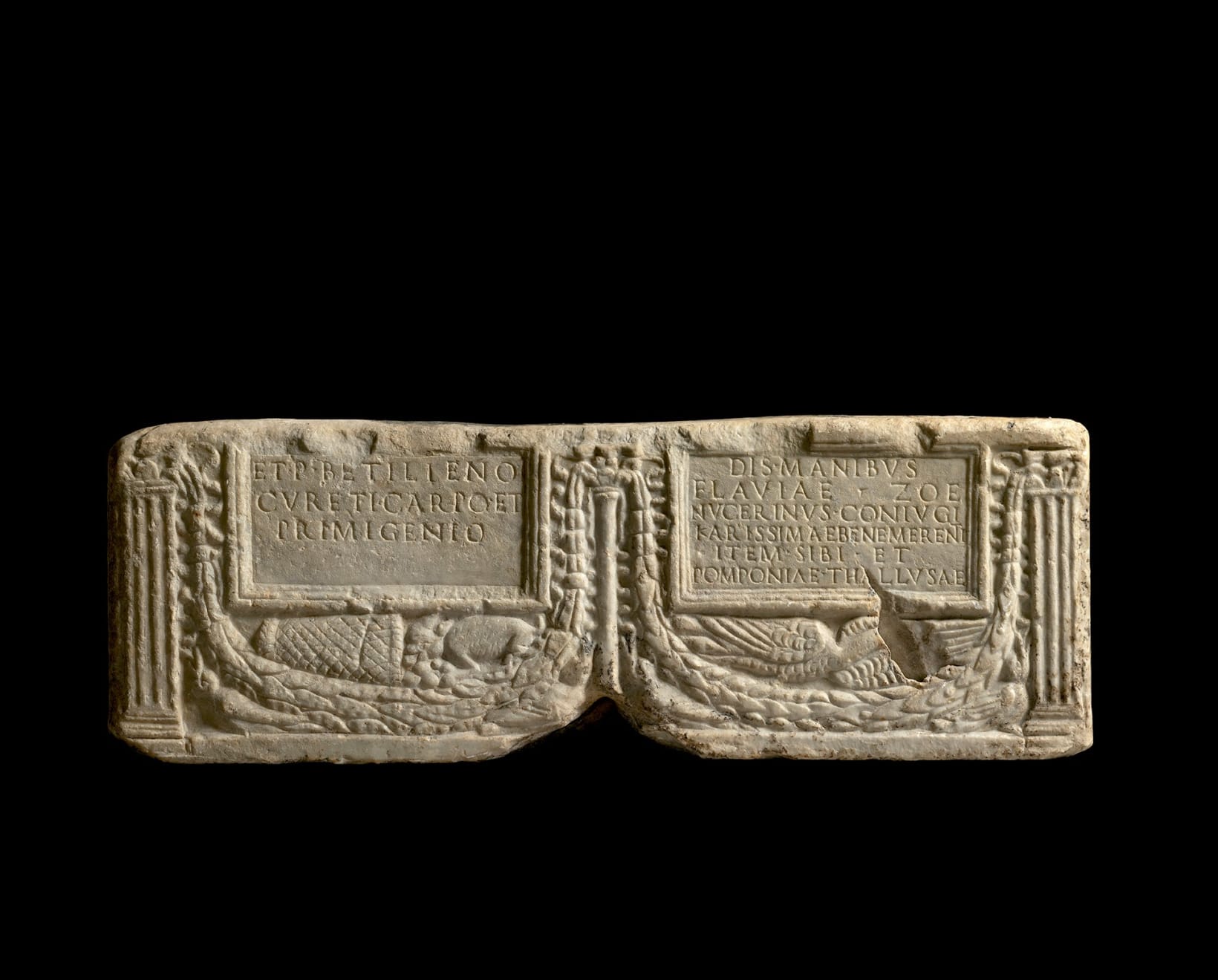Roman
Further images
"Dis Manibus | Flaviae Zoe | Nucerinus coniugi | karissimae bene merenti | item sibi et | Pomponiae Thallusae" on the right panel; the left panel, reads "et P Betilieno | Cureti Carpo et | Primigenio."
The translation of both, reads:
"To the Spirits of the Dead, Nucerinus [made this monument] for Flavia Zoe, dearest [and] well-deserving wife, likewise for himself and for Pomponia Thallusa / and for P[ublius] Betilienus Curetius Carpus and Primigenius.”
Provenance
Rossie Priory Collection, Perthshire, Scotland, acquired in Rome between 1820 - 1825, thence by descentMr. A. Alonso, Salamanca, Spain, acquired in the 1960s - 1980s.
Lord Charles Kinnaird (1780-1826), the 8th Lord Kinnaird, and his son Lord George William Russell (1790-1846), the 9th Lord, of Rossie Priory, Perthshire, Scotland, visited Rome on the Grand Tour and acquired many ancient works which they brought back to their stately home. A catalogue of the ancient art was compiled by the 9th Lord and published in 1877.
Literature
Double cinerary urns are rarer. For a comparative example of a cinerary urn inscribed to Julia Prisca, see the Museo Nazionale Romano, Rome (Inv. no. 297204).Such double-panel urns usually commemorate the deceased with space left for his (or her) surviving spouse in the other panel. This urn is likely to be for a family group. Flavia Zoe must have been a first-generation Roman citizen – perhaps the daughter of an imperial freedman – since this inscription with its DIS MANIBVS can hardly be later than circa AD 125, and the Flavian dynasty ended in AD 96. Nucerinus, the dedicator of the urn, and Flavia Zoe's husband, does not give his full name. It is possible that he was a Roman citizen like his wife. If so, it might be that Pomponia Thallusa was his sister or daughter – taking him to be Pomponius Nucerinus – and that she was married to Betilienus Curetius Carpus. Then Primigenius might be their son: it means 'first-born'.
Publications
Lord Kinnaird and Edmond Oldfield, Notes and Reminiscences of Rossie Priory, Dundee, 1877.A. Michaelis, Ancient Marbles in Great Britain, Cambridge, 1882, p. 655, no. 101.
Corpus Inscriptionum Latinarum, vol. VI, 3, Berlin 1886, Urbs Roma, no. 18468 (Recorded at Rossie Priory).





